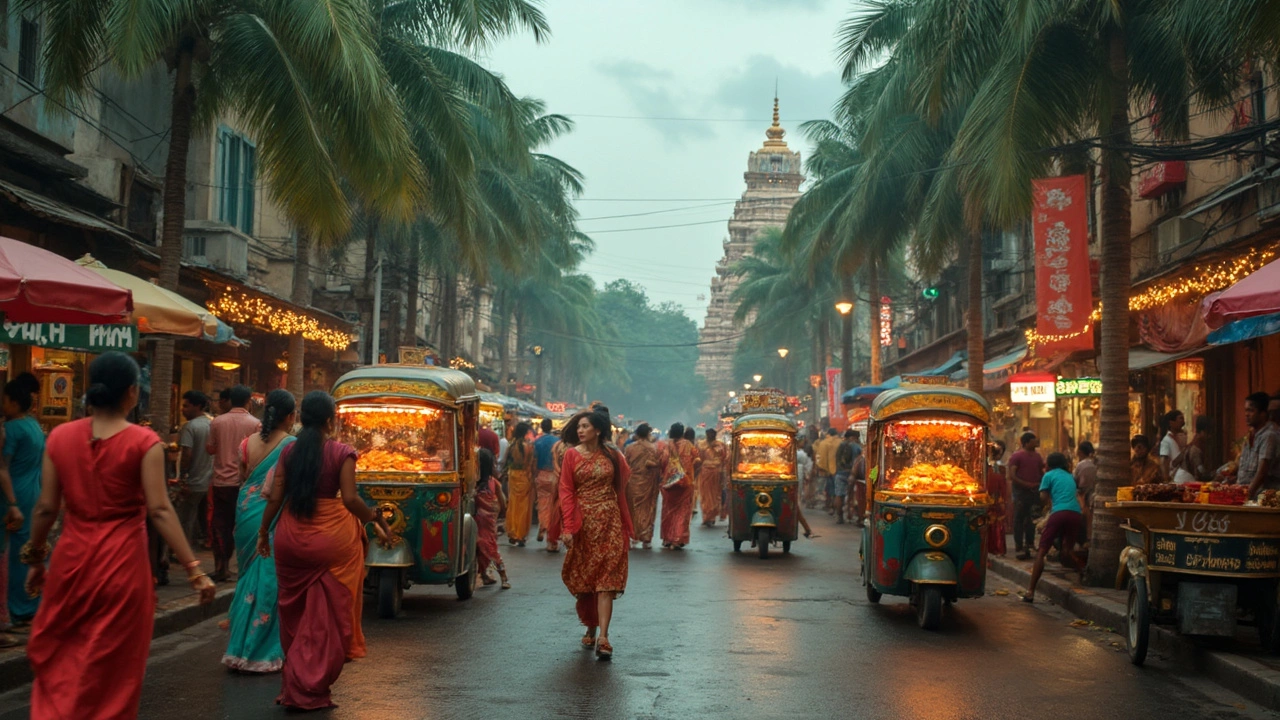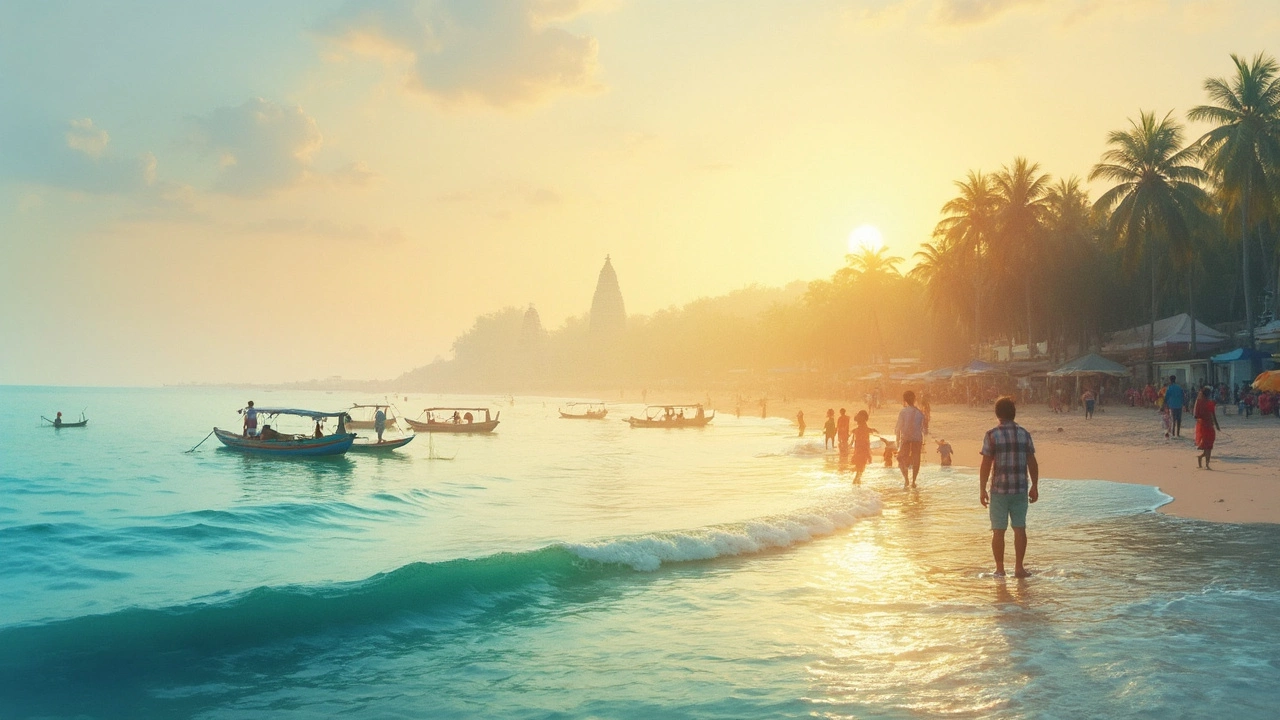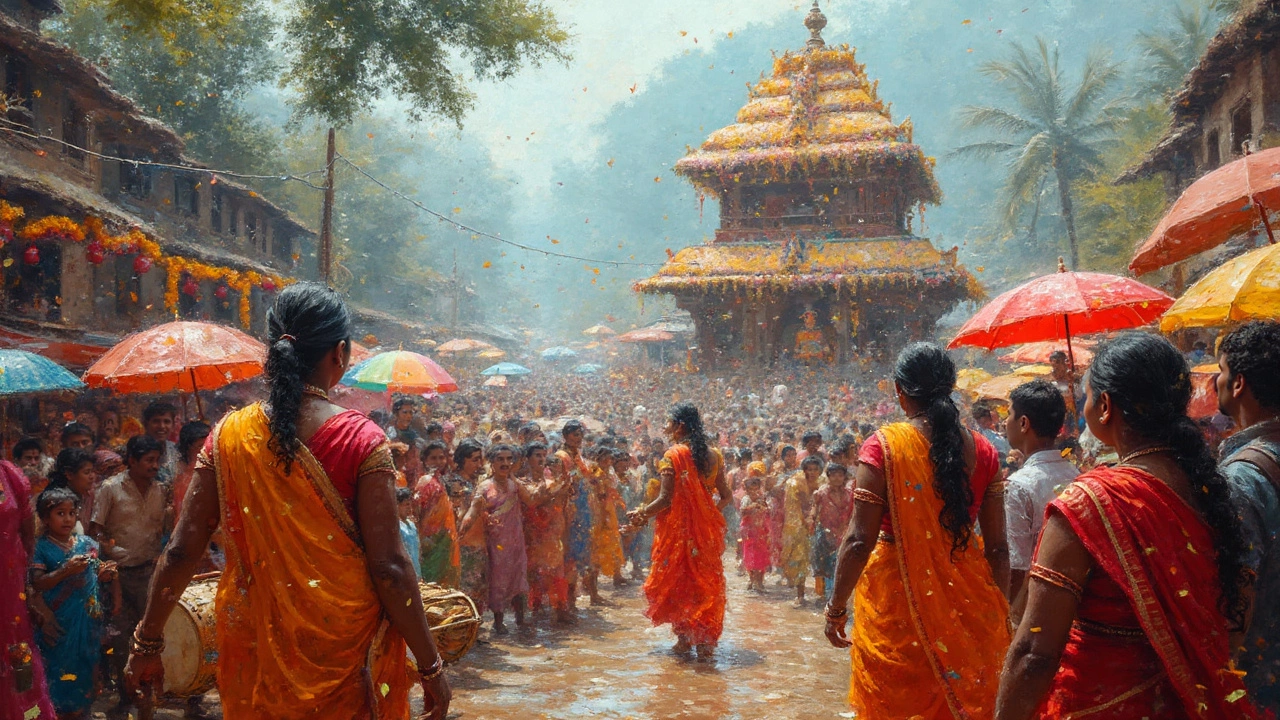Best Month for South India Tour: When to Go and Why Timing Matters
 Apr, 22 2025
Apr, 22 2025
If you want a great South India trip, picking the right month can make or break your plans. Think sweltering heat, chaotic crowds, or those sudden downpours that drench you in seconds. The difference between a relaxing beach day in Kerala and hiding from a torrential rain in Chennai often comes down to timing.
It’s not all about the weather, though. Some months unlock cool local festivals, spice markets bursting with fresh harvests, and beaches that are actually clean and not jammed with selfie sticks. Want to avoid both sunburn and long lines at temples? Choosing your month wisely can save you from hassles you didn’t even know about.
The region’s climate dances between hot and humid, breezy and perfect, or just downright soggy. South India isn’t a one-size-fits-all place; the experience in January is nothing like it is in June or October. Even the locals plan their own holidays around the weather—pretty telling, right?
- How Weather Shapes Your Trip
- Peak Months: December to February
- Shoulder Seasons and Hidden Perks
- Festivals and Local Events
- Practical Tips for Every Season
How Weather Shapes Your Trip
Weather is a big deal when planning your South India tour. Down here, the seasons aren’t just a background detail; they’re one of the main characters. South India is famous for having three big weather windows: the winter cool-down (December to February), the pre-monsoon heat wave (March to May), and the monsoon rains (June to September). Each comes with its own perks—and plenty of quirks.
Let’s cut to the chase. If you don’t like sweating through your t-shirt or getting caught in soaking rain, timing is everything. December to February is mostly pleasant everywhere—Bangalore, Cochin, Pondicherry, you name it. Temperatures usually hover around 22–28°C (72–82°F) during the day, and there’s not much humidity or rain. You can actually enjoy long temple walks, go trekking in the Western Ghats, or sip chai on a Kerala houseboat without melting.
Between March and May, things heat up fast. We’re talking daytime highs regularly above 35°C (95°F), with some inland spots pushing even higher. Beach lovers get their sun, but for most sightseeing, it’s honestly a sweaty deal. Even locals avoid outdoor stuff past 10 a.m. during these months.
Monsoon rolls in starting June, with the southwest coast—think Kerala and coastal Karnataka—getting pounded first. Expect short, wild rain bursts that can flood roads and cancel boat rides. Trekking trails turn slippery, and many national parks, like Periyar or Bandipur, restrict visits because of safety risks. Still, if you love bargains and don’t mind rain, hotels are often cheaper, and the greenery is at its peak.
Here’s a clear comparison shown in the table below. These cities give you a good idea of what to expect:
| Month | Kochi (Kerala) | Chennai (Tamil Nadu) | Bangalore (Karnataka) |
|---|---|---|---|
| January | Avg 27°C, dry | Avg 25°C, dry | Avg 22°C, dry |
| May | Avg 31°C, humid | Avg 32°C, very hot | Avg 28°C, hot |
| July | Avg 28°C, heavy rain | Avg 31°C, less rain | Avg 25°C, moderate rain |
This is why most people with experience swear by winter for their South India tour. But if you’re after deals or want less crowded spots, monsoon or off-peak months can be just as interesting—just plan for the elements. Always check the local climate for the region you want to visit, since places like Ooty or Munnar bring chill weather even in summer, while Chennai can feel like an oven.
Peak Months: December to February
If you’re aiming for the best month to go on a South India tour, December to February usually gets top marks—for good reason. This stretch is when the region finally cools down, and humidity drops to manageable levels. The days are warm but not suffocating, and nights are comfortable. Big cities like Bengaluru, Kochi, and Chennai show their friendlier sides to tourists, while hill stations like Munnar or Ooty actually get chilly enough for a light jacket at night.
This season skips the awful monsoon rains and the intense summer sun. Beaches in Goa, Kerala, and Pondicherry are actually inviting, not just for photos. Water activities like houseboat rides in Alleppey or surfing in Varkala are safe because the sea is usually calm. Plus, there's barely any risk of heatstroke during those long walks through spice plantations, old forts, or bustling local markets.
| City | Avg. Day Temp (°C) | Avg. Night Temp (°C) |
|---|---|---|
| Kochi | 31 | 23 |
| Chennai | 29 | 22 |
| Bangalore | 28 | 17 |
The flip side? This is the busiest time. Loads of international and domestic travelers head south at this time, especially around Christmas and New Year's. If you want a private slice of paradise, it helps to book hotels, trains, and guided tours well ahead. Some places jack up prices during these months, so bargain where you can and keep an eye out for deals, especially on weekdays.
On the upside, this is also when South India lights up with events. The Chennai Music Season kicks off in December, cramming weeks of concerts and dance shows into city auditoriums and old halls. Pongal, usually in January, brings wild festivities in Tamil Nadu—fields decorated, sweet rice dishes everywhere, and folks in new clothes. Kerala hosts its own temple festivals, rolling out elephants and fireworks. If you want to catch South India at its liveliest, you're unlikely to be disappointed in these peak months.

Shoulder Seasons and Hidden Perks
Let’s talk about those middle months: March to early May and October to mid-November. These shoulder seasons in South India often get ignored, but they come with some real benefits if you time it right for your South India tour.
First, the crowds shrink down. The big groups from winter holidays disappear, so places like Hampi, Mysore, and Kochi feel more laid-back. You won’t fight for space at temples, and hotel prices tend to drop. A 2023 hospitality report showed that hotel rates in Kerala dip by up to 25% between March and May, compared with peak season.
The weather? It’s a bit of a mixed bag, but manageable if you’re smart. March and April can be hot, especially inland in Tamil Nadu or Karnataka, but hill stations like Ooty and Munnar serve up cool mountain air. October and November see things cool off after the main monsoon, so waterfalls are full, forests look extra green, and the beaches in places like Goa and Karnataka are in good shape for swimming. If you don’t mind the occasional short shower, this is golden.
There’s one more hidden perk: local markets and festivals. In March or April, you might catch Vishu in Kerala or Tamil Puthandu in Tamil Nadu—both incredible cultural experiences, without the tourist rush. After the monsoon, fresh produce hits the spice markets, and fishing villages along the coast kick into busy mode. Travel tips? Plan some flexibility in your days so you can catch unexpected events and enjoy spontaneous exploring.
- March-April: Hot, but quieter and budget-friendly.
- October-November: Fresh scenery, mild weather, and more local vibe.
- Better hotel deals and fewer crowds everywhere.
- Chance to enjoy smaller local festivals and lively markets.
The shoulder seasons might not get all the hype, but if you want the local side of a South India tour—with more chill and less chaos—this is your window.
Festivals and Local Events
South India isn’t shy when it comes to celebrations. No matter when you show up for your South India tour, chances are there’s a big event somewhere, but some months are just packed with action. Timing your trip with the right festivals can totally change your experience—think streets filled with color, music blaring, and locals inviting you to join in.
Mark January on your calendar if you want to see Pongal in Tamil Nadu. It’s a four-day harvest festival that usually kicks off on the 14th. Expect decorated cows, heaps of sweet rice, and village contests that you don’t see every day—like bull-taming in Madurai. Karnataka and Andhra Pradesh also light up for Sankranti, which is the same festival by a different name.
February and March are great for cultural buffs. Kerala’s Thrissur Pooram, with its jaw-dropping processions of elephants and fireworks, is a total showstopper. If you're into music and dance, the Chennai Music Season (actually December to January) gathers India’s best classical musicians—even if you're not a fan, it’s worth a listen.
Come August and September, Onam in Kerala is the big-ticket event. This ten-day festival floods homes with flower carpets, boat races, traditional feasts, and people decked out in new clothes. You have to try the Onam sadya (a massive veggie feast on a banana leaf) at least once if you’re around.
Here’s a simple look at popular festivals by month:
| Month | Festival | State |
|---|---|---|
| January | Pongal | Tamil Nadu |
| January-February | Chennai Music Season | Tamil Nadu |
| April | Vishu | Kerala |
| August-September | Onam | Kerala |
| April-May | Thrissur Pooram | Kerala |
| November | Hampi Utsav | Karnataka |
A big tip: book your hotels well in advance if you’re planning to go during festival times. Places sell out fast, especially in hot spots like Kochi or Madurai. Also, these festivals mean roads can get crowded, and public transport is stuffed to the brim—so plan ahead and keep your patience handy.

Practical Tips for Every Season
No matter when you plan your South India tour, a few handy tricks can go a long way. The region’s vibe changes a lot every few months, so customizing your plans saves you stress and helps you get the most bang for your buck.
- December to February: These are the golden months—cooler temps, less sticky air, and most festivals packed into the calendar. Carry a light jacket if you’re heading up to hill stations like Ooty or Munnar. Hotels get booked fast, especially in Goa and Kochi. Booking two or three months ahead is smartest.
- March to May: Summer comes in hot—literally. Daytime highs easily shoot up to 40°C (104°F) in many places. Stick to hill stations, or flop on the beaches of coastal Kerala and Karnataka, but pack lots of sunscreen and drink water. Indoor attractions (like Mysore Palace or museums) are your best friends mid-afternoon.
- June to September (Monsoon): Rains sweep in, filling rivers, making the landscapes blindingly green. Kerala turns magical, but some roads get flooded and leeches show up in trekking zones. Waterproofed bags for your gear are a lifesaver. Trains sometimes get delayed, so keep your plans flexible. Ayurveda retreats are busy (the rainy season is popular for treatments).
- October to November: The rains pull back, but you still get cooler breezes and lush countryside. Perfect timing for outdoor treks (like Coorg or Nilgiris) and wildlife spotting. Keep an umbrella handy just in case. The scenery is at its best, especially if you're a fan of green tea estates or waterfalls.
Here’s a snapshot of average temps and rainfall in South India’s main tourist hotspots:
| City | Jan (°C) | May (°C) | Aug (Rain mm) |
|---|---|---|---|
| Bangalore | 16-28 | 22-35 | 140 |
| Kochi | 23-32 | 27-34 | 350 |
| Chennai | 20-29 | 28-39 | 125 |
If you’re traveling for major festivals—say, Onam in Kerala or Pongal in Tamil Nadu—book accommodation early and double-check local transport schedules. Crowds can get wild and prices might go up overnight. And trust me, when it comes to food, don’t miss seasonal street snacks: mangoes in April, banana chips during Onam, and hot masala chai during winter evenings.